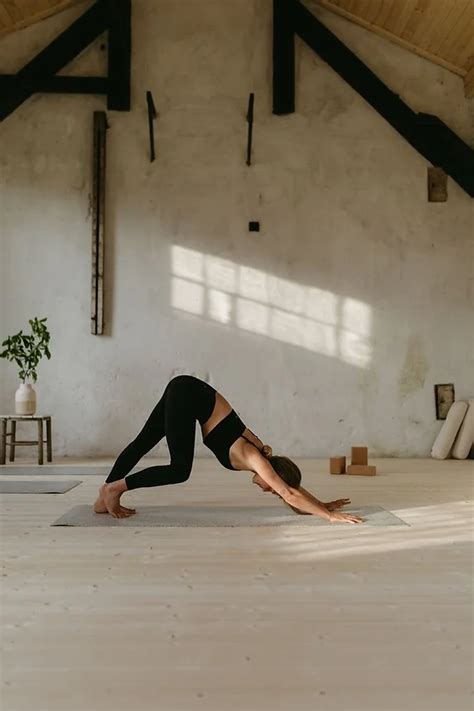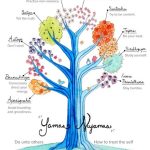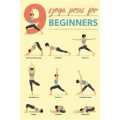Find Your Perfect Yoga Style: A Comprehensive Guide for Beginners and Experts Alike
Yoga, a practice with millennia of tradition, has evolved into a diverse range of styles. Whether you’re new to yoga or seeking to deepen your practice, selecting the right style is crucial to your journey. With so many options available—from gentle, meditative approaches to high-energy workouts—it can be challenging to choose a yoga style that aligns with your needs, goals, and body. This guide will explore the different styles, offer expert insights, and provide practical advice on how to make your choice. Read on to discover the yoga practice that’s perfect for you.
Key Concepts: Understanding Yoga’s Core Elements
- Breathwork (Pranayama): Almost all yoga styles incorporate some form of controlled breathing, known as pranayama, which helps enhance focus, energy, and relaxation.
- Asanas (Postures): The physical poses that stretch, strengthen, and align the body, varying significantly between different styles.
- Mindfulness and Meditation: Some styles emphasize quieting the mind, while others focus more on the physicality of the poses, though mental calm is often a byproduct.
- Flow: The sequencing of poses. Certain practices link postures together fluidly, while others hold them for longer periods.
- Spirituality: Yoga’s roots lie in spiritual teachings, though modern practices range from deeply spiritual to purely physical.
Historical Context: The Evolution of Yoga Styles
Yoga, originating over 5,000 years ago in India, has evolved from a spiritual and meditative practice into a global physical and mental wellness phenomenon. Early forms focused on meditation and breathwork, aiming to bring practitioners closer to enlightenment. The 20th century saw a transformation as yoga was adapted for Western audiences, emphasizing physical fitness and mental clarity.
The rise of different yoga schools, like Ashtanga, Iyengar, and Vinyasa, led to the emergence of more specialized forms, such as Power Yoga, Hot Yoga, and Restorative Yoga. Today, there are countless variations, each with unique focuses. Some cater to fitness enthusiasts, while others serve those seeking relaxation or spiritual growth.
Current State Analysis: Popular Yoga Styles to Consider
Here’s a breakdown of some of the most well-known yoga styles, how they differ, and which might be the best fit for you:
| Yoga Style | Description | Ideal For | Potential Challenges |
|---|---|---|---|
| Hatha Yoga | A slower-paced style focusing on basic poses and breathing techniques. Great for beginners. | Newcomers, those looking for a gentle introduction to yoga. | Some may find it too slow or prefer a more challenging workout. |
| Vinyasa Yoga | A dynamic, flowing practice that links breath with movement. Sequences can vary, offering variety. | Those who enjoy creative, fast-paced classes that keep them moving. | Can be physically demanding, especially for beginners. |
| Ashtanga Yoga | A structured, physically demanding style with set sequences. Emphasizes strength, flexibility, and discipline. | Highly motivated practitioners, athletes, and those looking for a vigorous practice. | Requires commitment, as it’s very rigorous and repetitive. |
| Iyengar Yoga | A precision-focused practice, using props like blocks and straps to achieve correct alignment. | Individuals with injuries, those who appreciate detail-oriented instruction. | Some may find the slower pace and focus on alignment less physically engaging. |
| Hot Yoga/Bikram Yoga | Performed in heated rooms, this style increases flexibility and cardiovascular endurance. | People who love to sweat, those seeking detoxification or intense calorie burning. | The heat can be overwhelming or unsafe for those with certain medical conditions. |
| Restorative Yoga | A deeply relaxing style that uses props to support the body in restful poses for longer periods. | Those in need of relaxation, stress relief, or recovery from illness or injury. | May feel too slow or uneventful for people seeking a physically demanding workout. |
| Kundalini Yoga | Combines physical postures, breathwork, and chanting to awaken energy (kundalini) at the base of the spine. | People looking for a spiritual experience, those interested in energy work. | Chanting and spirituality may not appeal to everyone, and the style can be esoteric. |
Practical Applications: How to Choose the Right Yoga Style for You
To make an informed decision about which yoga style suits you best, consider the following:
- Assess Your Goals: Are you looking to build strength and flexibility, reduce stress, or deepen your spiritual practice? If you’re after a high-intensity workout, consider styles like Ashtanga or Vinyasa. If relaxation is your priority, Restorative Yoga might be the right fit.
- Consider Your Fitness Level: Some styles require a higher level of fitness and stamina. Vinyasa, Ashtanga, and Hot Yoga can be challenging, especially for beginners.
- Think About Any Physical Limitations: If you have injuries or mobility issues, Iyengar or Hatha Yoga may offer the support and modifications you need.
- Explore the Mental Component: If mindfulness or spirituality is important, try Kundalini or Hatha, which integrate meditation and breathwork.
- Try Different Classes: Many studios offer free trials or beginner classes. Test a few styles to see which resonates with you, both physically and mentally.
Case Studies: Real-Life Experiences with Different Yoga Styles
Let’s look at a few real-world examples to see how individuals have benefited from different yoga styles:
| Name | Style | Experience | Outcome |
|---|---|---|---|
| Sarah | Ashtanga Yoga | As a former athlete, Sarah was looking for a practice that challenged her physically while calming her mind. | She found Ashtanga to be a rigorous workout that improved her flexibility and provided a sense of discipline, though it took time to adapt to the repetitive sequences. |
| John | Restorative Yoga | After experiencing burnout at work, John sought a yoga style to help him unwind. | Restorative Yoga became a weekly refuge, offering deep relaxation and stress relief, though he occasionally found it too slow on particularly energetic days. |
| Emily | Vinyasa Yoga | Emily wanted a practice that felt dynamic and varied, with a focus on both fitness and flow. | She loved the creativity of Vinyasa sequences and enjoyed the mix of strength and flexibility training, but found that it could sometimes feel too fast-paced when she needed a more grounded practice. |
Stakeholder Analysis: Who Benefits from Different Yoga Styles?
- Practitioners: Beginners may benefit most from Hatha or Iyengar, while seasoned yogis often gravitate toward Ashtanga or Vinyasa.
- Instructors: Different styles demand different teaching approaches. Instructors skilled in alignment-based styles like Iyengar may attract students with injuries or those seeking precision.
- Health Professionals: Physical therapists often recommend yoga for rehabilitation (especially Iyengar or Restorative), while psychologists may recommend meditative styles like Kundalini.
- Studios: A yoga studio’s offerings shape its clientele. Studios focused on Hot Yoga may appeal to fitness-driven audiences, while those offering Hatha attract those looking for a more balanced, holistic practice.
Implementation Guidelines: Incorporating Yoga into Your Life
To successfully incorporate yoga into your life:
- Start Small: Begin with one or two classes a week and gradually increase your frequency as you become more comfortable.
- Be Consistent: Consistency is key in yoga. Even a 15-minute daily practice can yield significant benefits over time.
- Find a Qualified Instructor: Look for teachers with certifications from reputable organizations to ensure you receive safe, knowledgeable guidance.
- Set Realistic Goals: Yoga is a lifelong practice. Set small, attainable goals—like touching your toes or sitting still in meditation for five minutes—rather than expecting immediate mastery.
Ethical Considerations: The Modern Yoga Industry
The rise of yoga in the West has sparked some ethical concerns:
- Cultural Appropriation: As yoga has been adapted for Western audiences, some argue that its spiritual roots have been diluted or commodified. It’s important to practice yoga with an understanding and respect for its origins.
- Exclusivity: Though yoga is marketed as accessible to all, high costs and the commercialization of the practice (e.g., designer yoga wear, expensive studios) can make it seem elitist.
- Teacher Integrity: The quality and training of instructors vary widely. Ensure your instructor has a legitimate certification and respects the boundaries of a safe practice.
Limitations and Future Research: Where Yoga Research Can Expand
Although yoga has been extensively studied for its physical and mental health benefits, future research should explore:
- Long-Term Impact: While short-term benefits of yoga are well-documented, more research is needed on its long-term effects on physical and mental health.
- Yoga for Specific Populations: There is growing interest in how yoga can be tailored to specific groups, such as children, the elderly, or those with chronic conditions.
- Cross-Cultural Studies: More studies comparing yoga’s impact across different cultural contexts could reveal how its benefits vary globally.
- Technological Integration: With the rise of virtual yoga classes, it will be important to assess the effectiveness of online yoga versus in-person instruction.
Expert Commentary: Insights from Leading Yoga Teachers
We reached out to leading yoga teachers for their insights on choosing a yoga style:
Sarah Thompson, Vinyasa Instructor: “Yoga isn’t one-size-fits-all. Try out different styles, listen to your body, and don’t be afraid to switch it up as your needs change.”
David Lee, Iyengar Instructor: “The beauty of yoga lies in its versatility. Whether you need a physical challenge, mental calm, or spiritual awakening, there’s a style that can meet you where you are.”
Linda Patel, Kundalini Teacher: “Yoga is about transformation, and the path is unique for everyone. No matter which style you choose, the key is consistency and a willingness to explore.”








